Abstract
1. A double sucrose gap method has been used to polarize and voltage clamp frog atrial muscle strips.
2. In response to steady depolarizing currents, normally quiescent strips often show pace-maker activity, and long lasting depolarization occurs when the current is terminated.
3. Voltage clamp experiments reveal the presence of two current components underlying delayed rectification.
4. The first of these components has a time constant which varies with potential and is approximately 500 msec at -90 mV. Its reversal potential usually lies between -70 and -40 mV and has always been found to be positive to the resting potential of normally quiescent fibres.
5. The time constant of the second component is extremely slow (τ [unk] 5 sec at -90 mV). Its reversal potential is much more positive than that of the faster component.
6. The results confirm the presence of a component of inward current which is insensitive to tetrodotoxin (TTX), having an activation threshold about 20 mV positive to the sodium threshold. This current differs from the two components underlying delayed rectification both in its greater speed of activation and in showing inactivation. The inactivation of this TTX-insensitive current is also a fairly rapid process.
7. It is suggested that pace-making in sino-atrial muscle may depend upon the deactivation of the faster component of delayed rectification and that the TTX-insensitive inward current is also involved.
Full text
PDF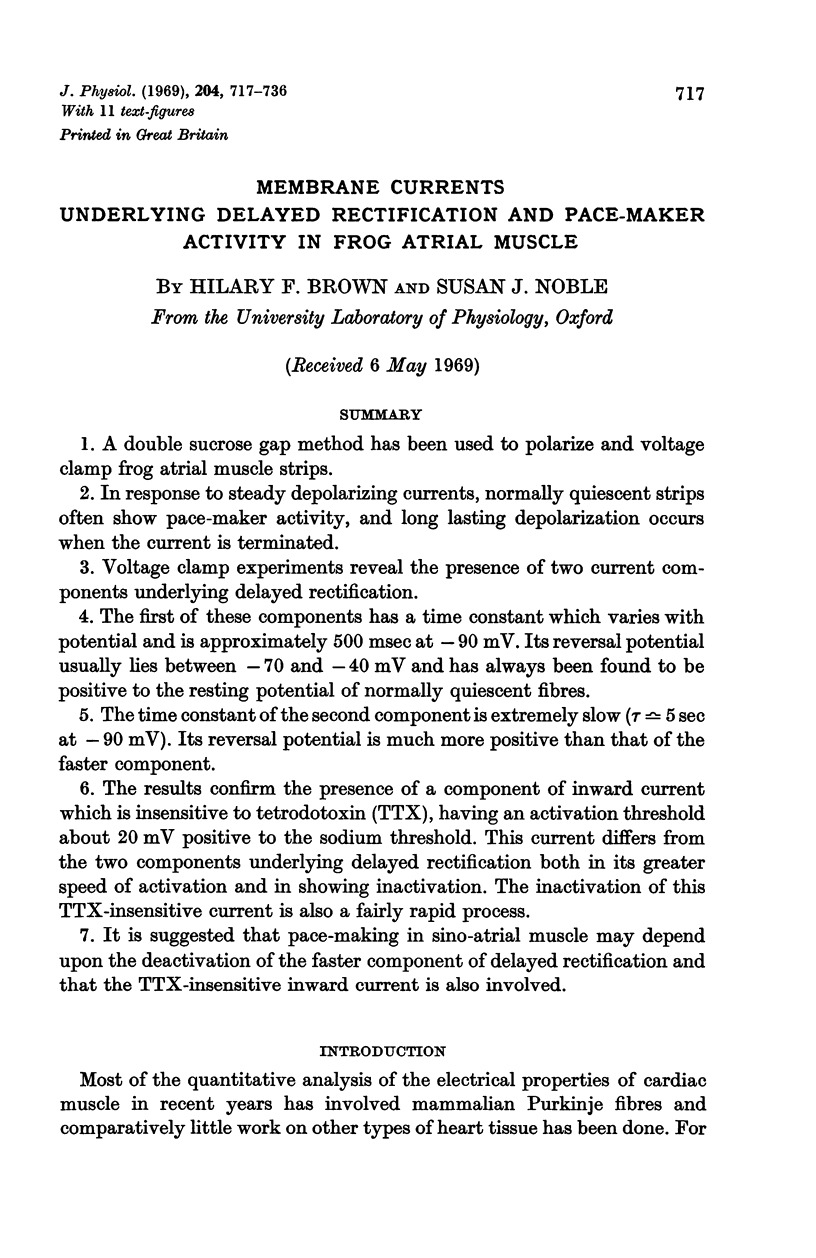
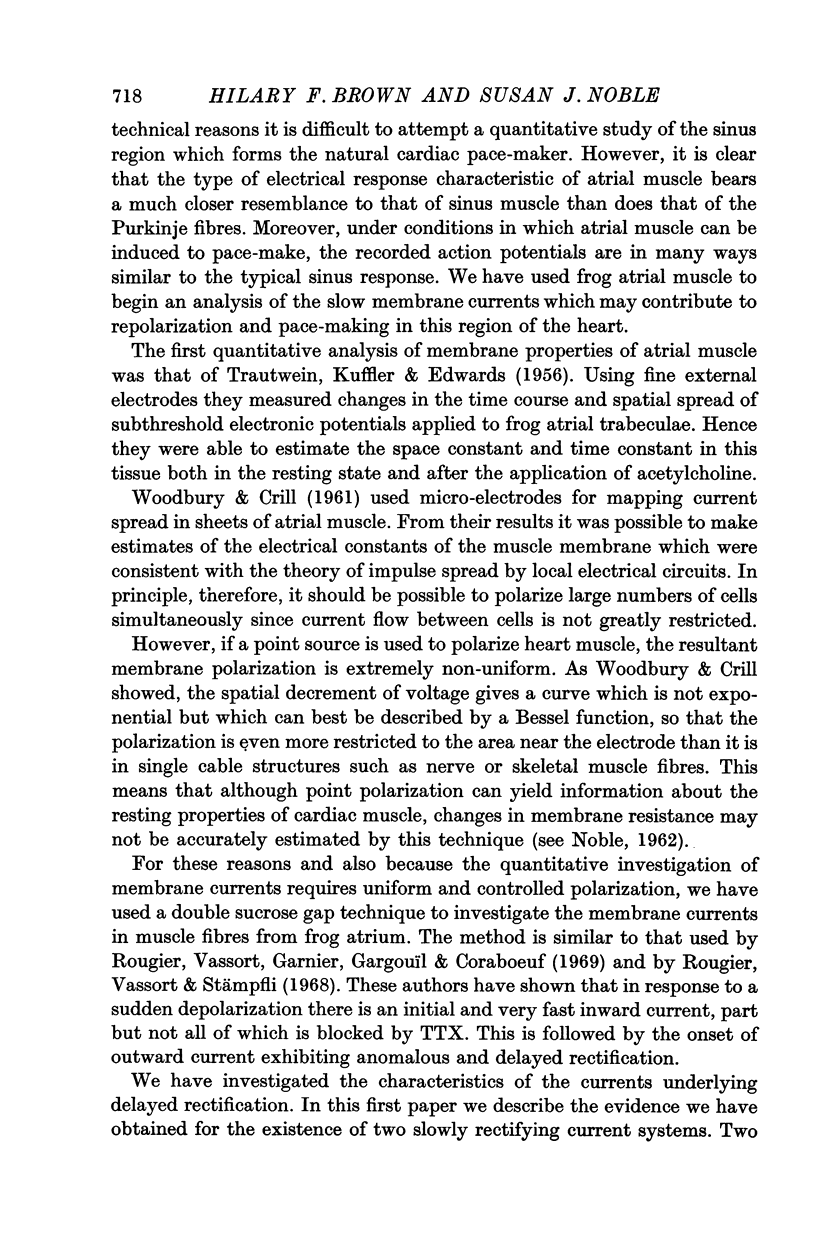
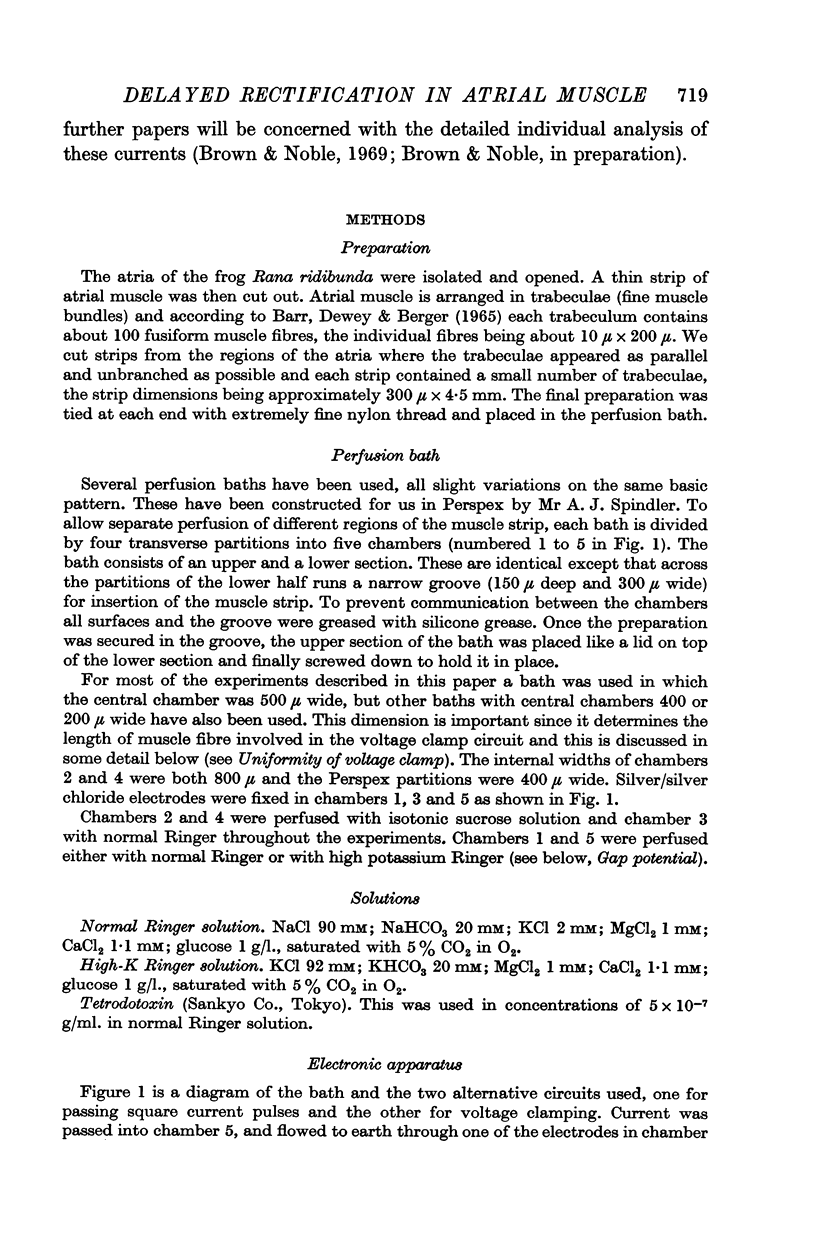
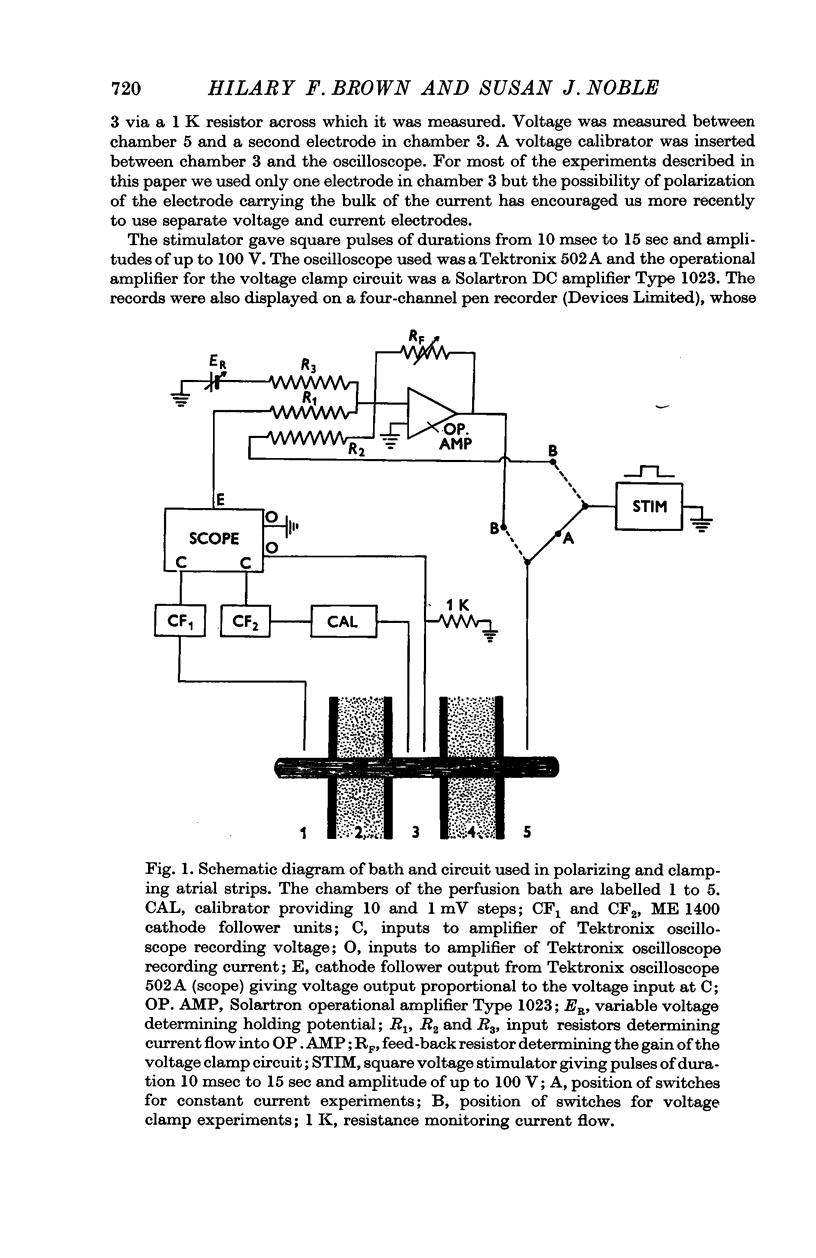
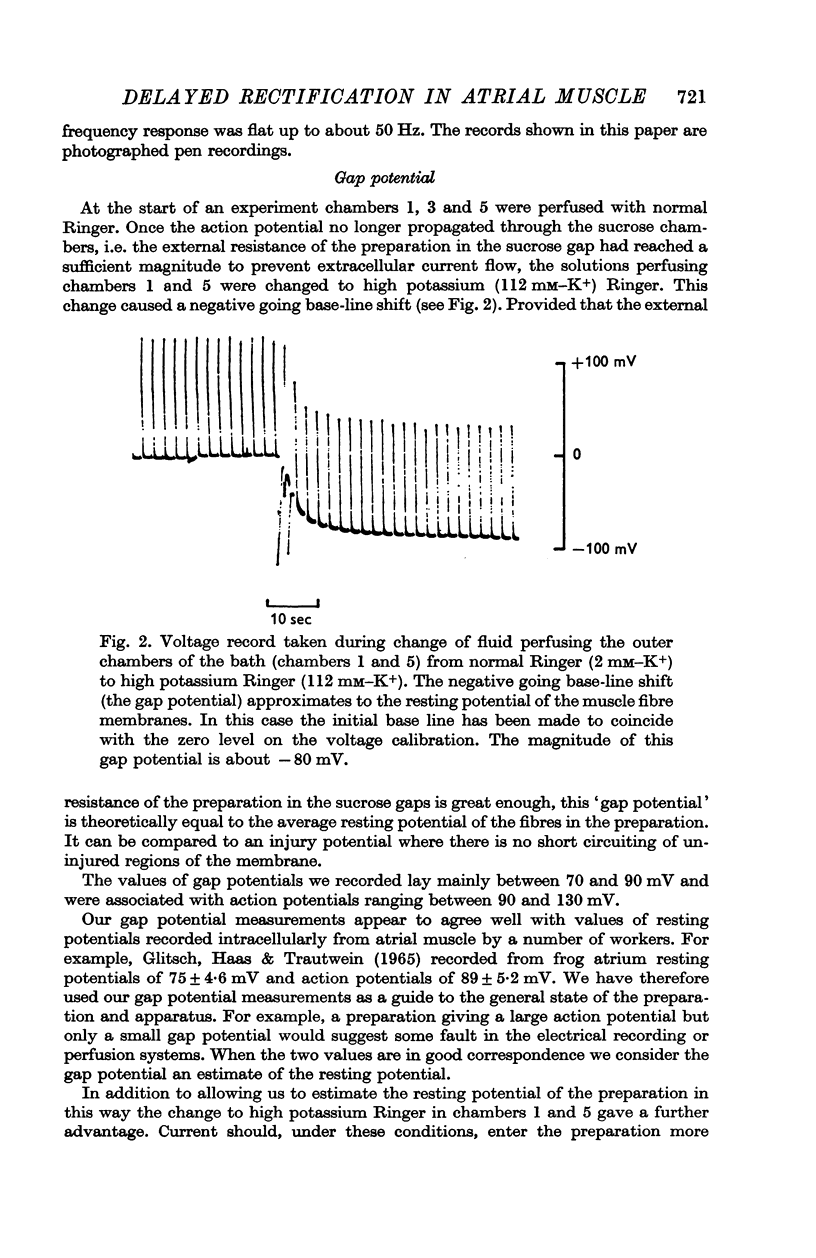
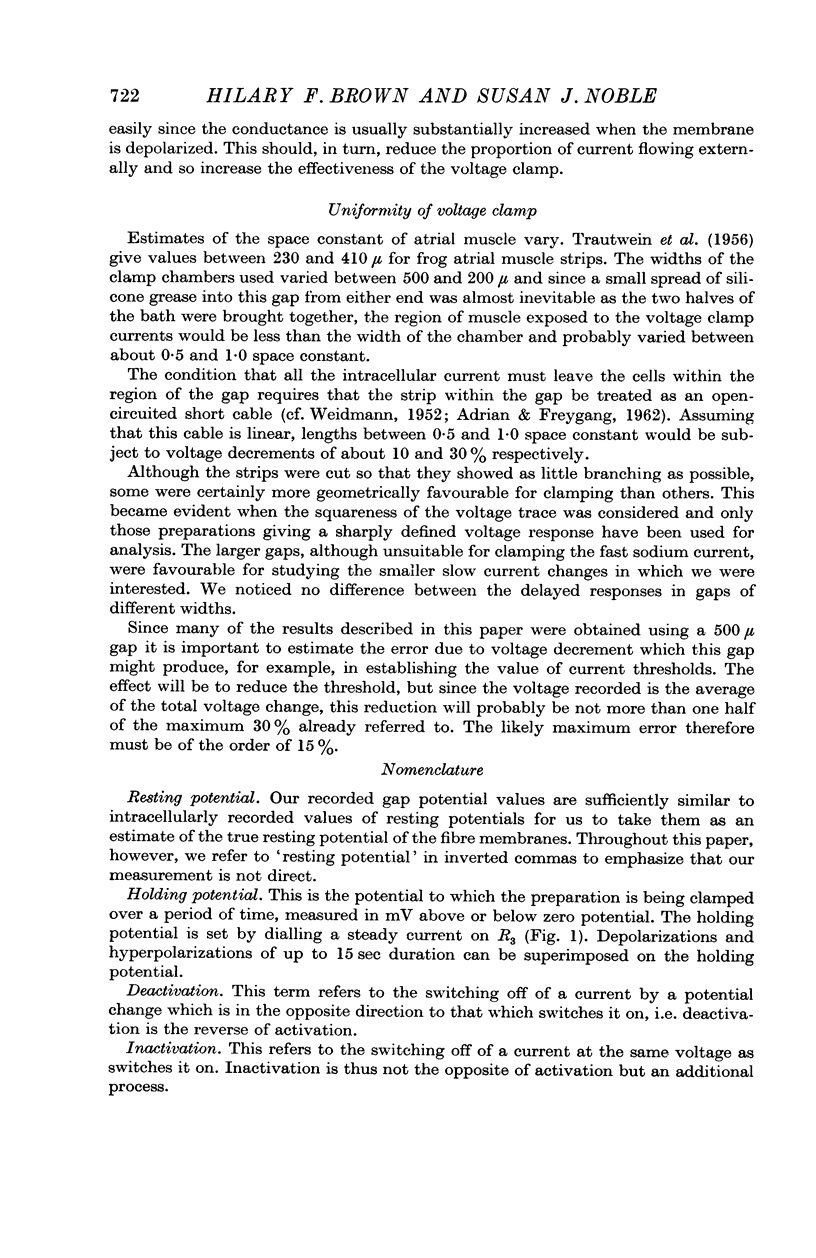
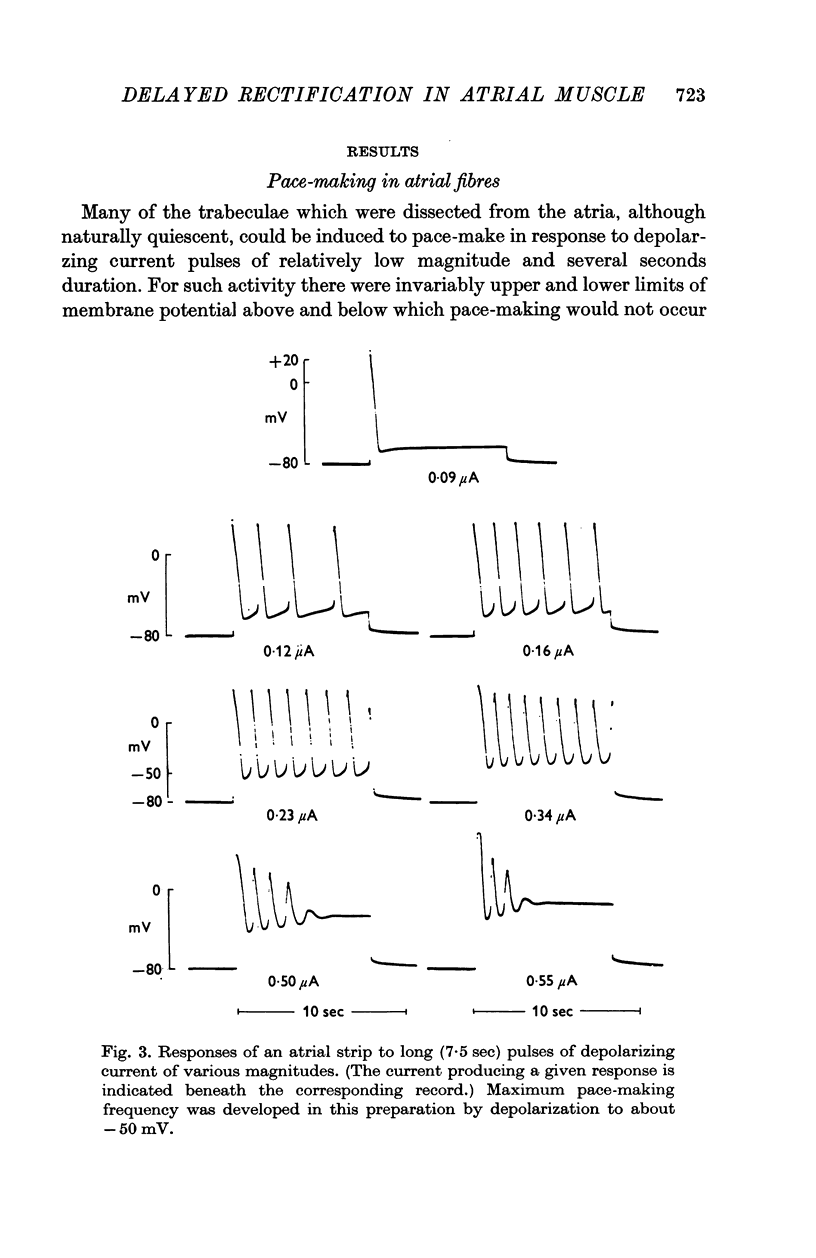
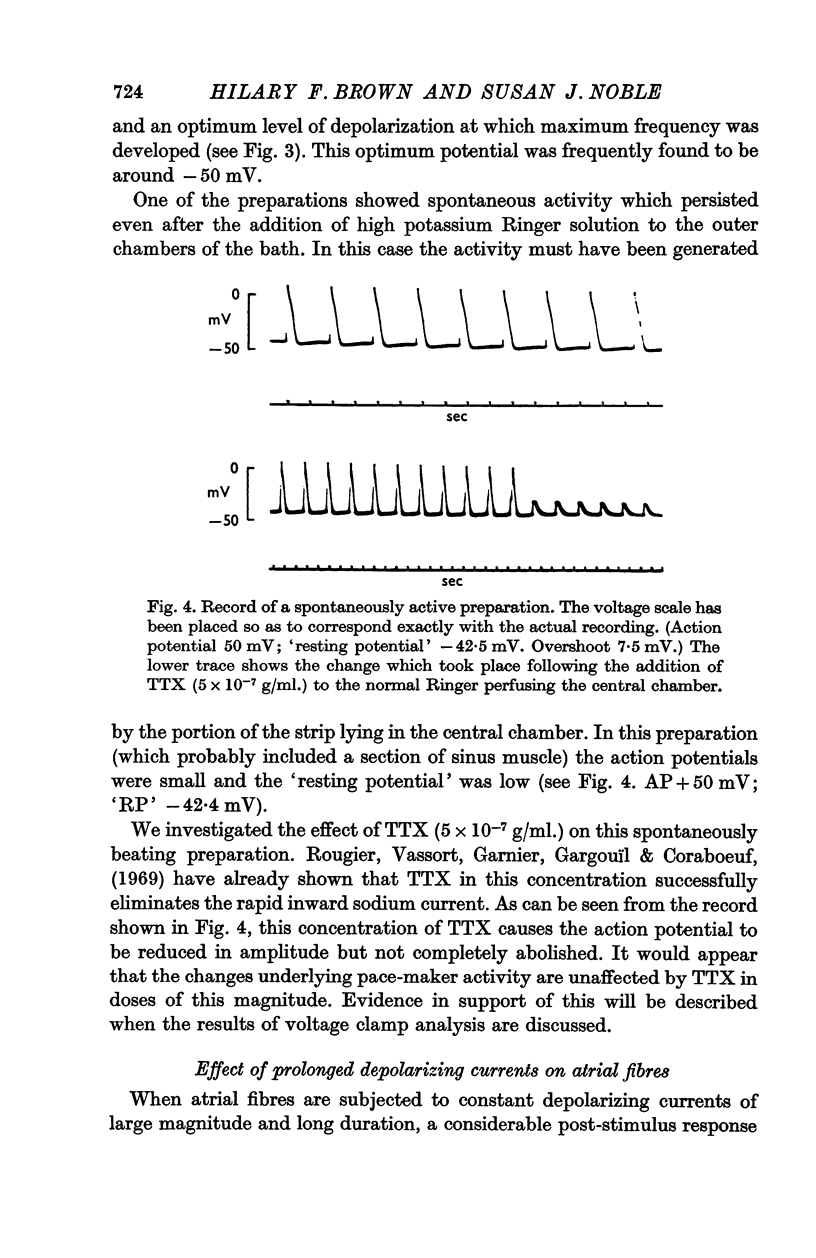
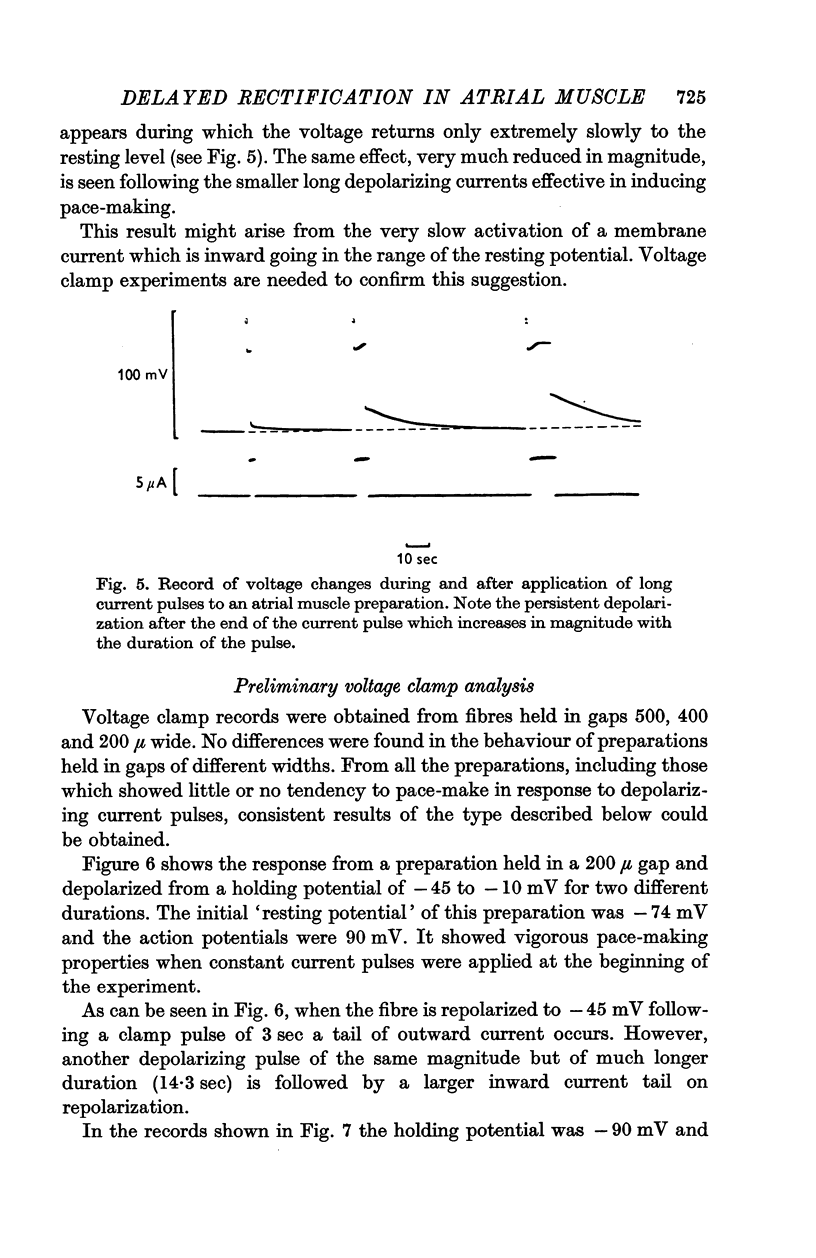
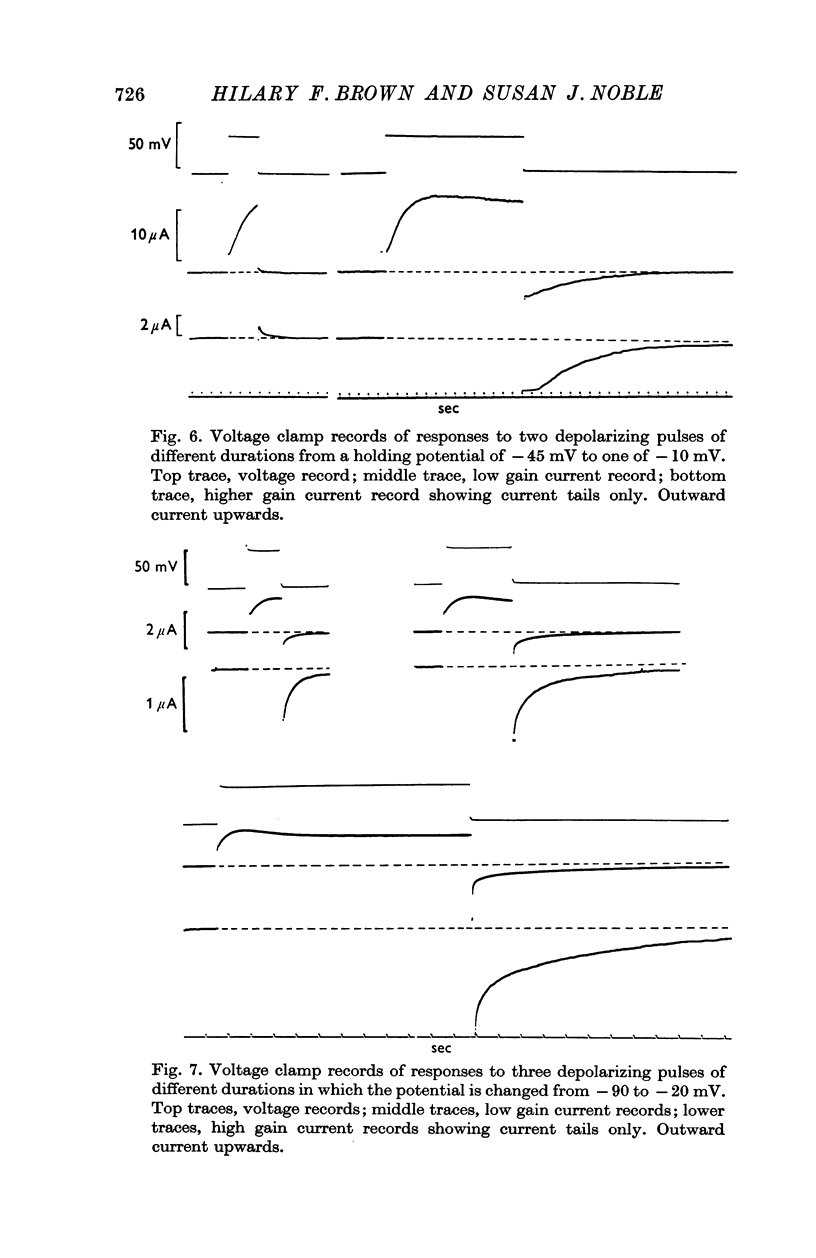
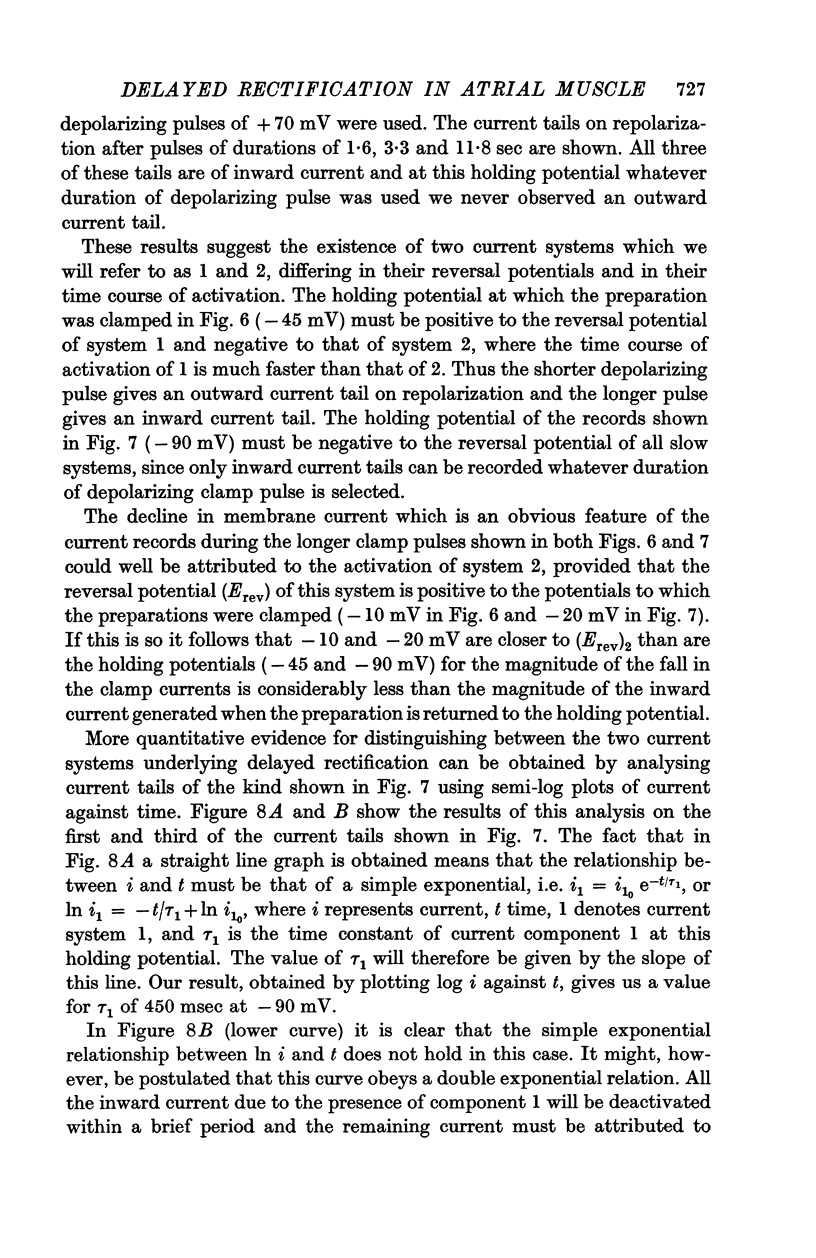
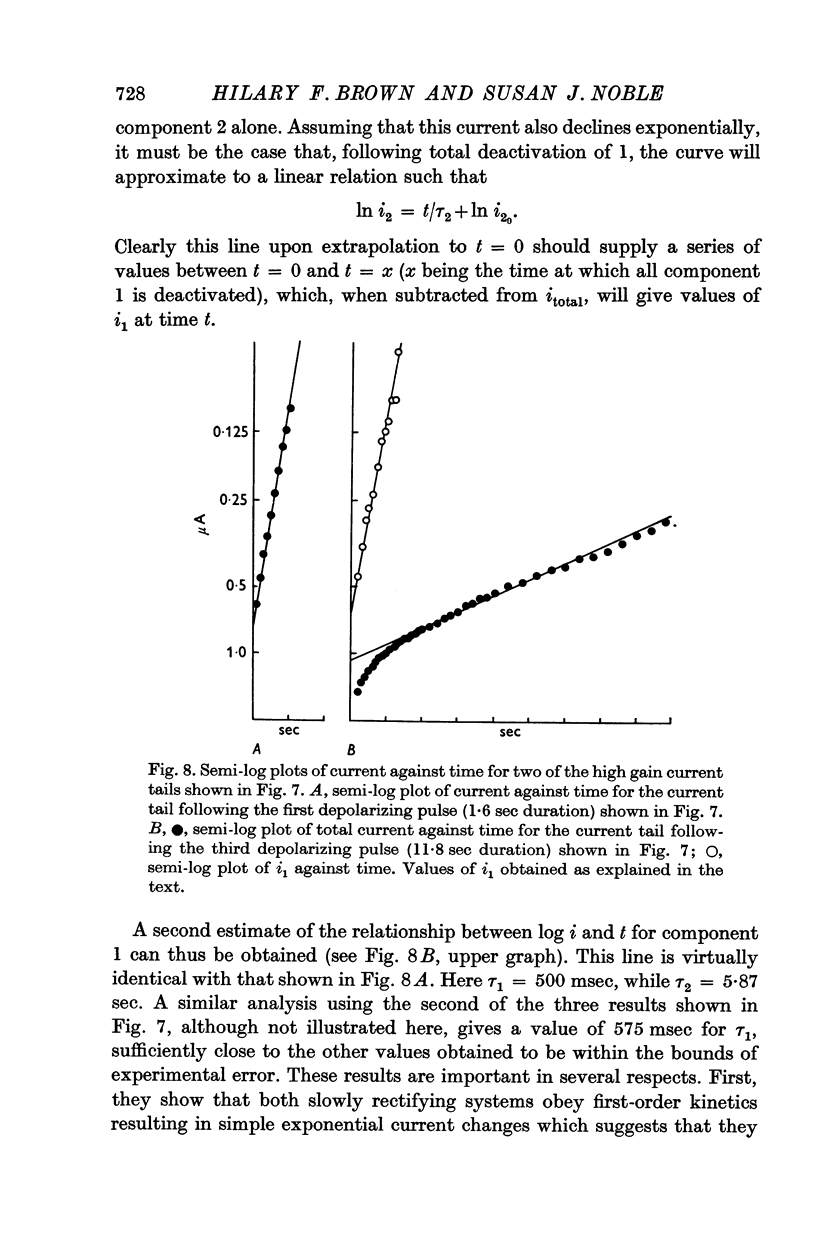
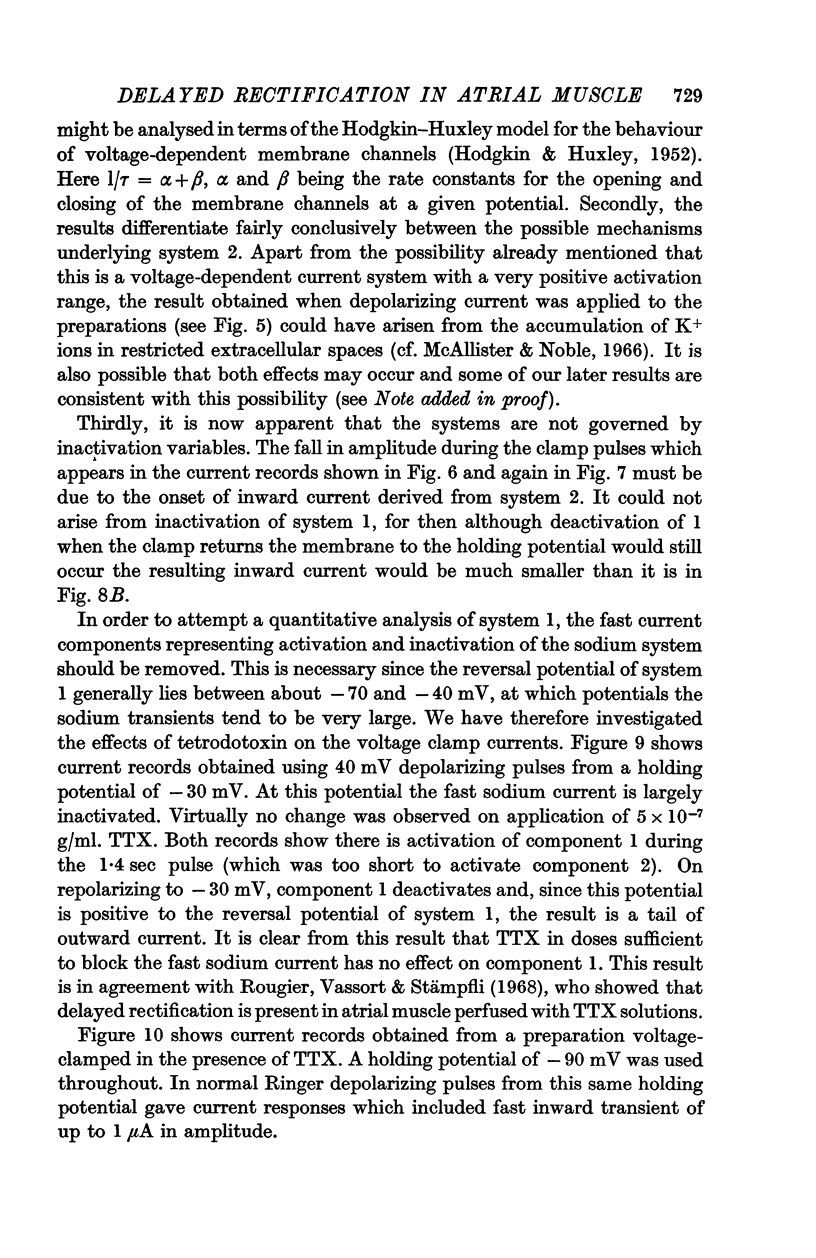

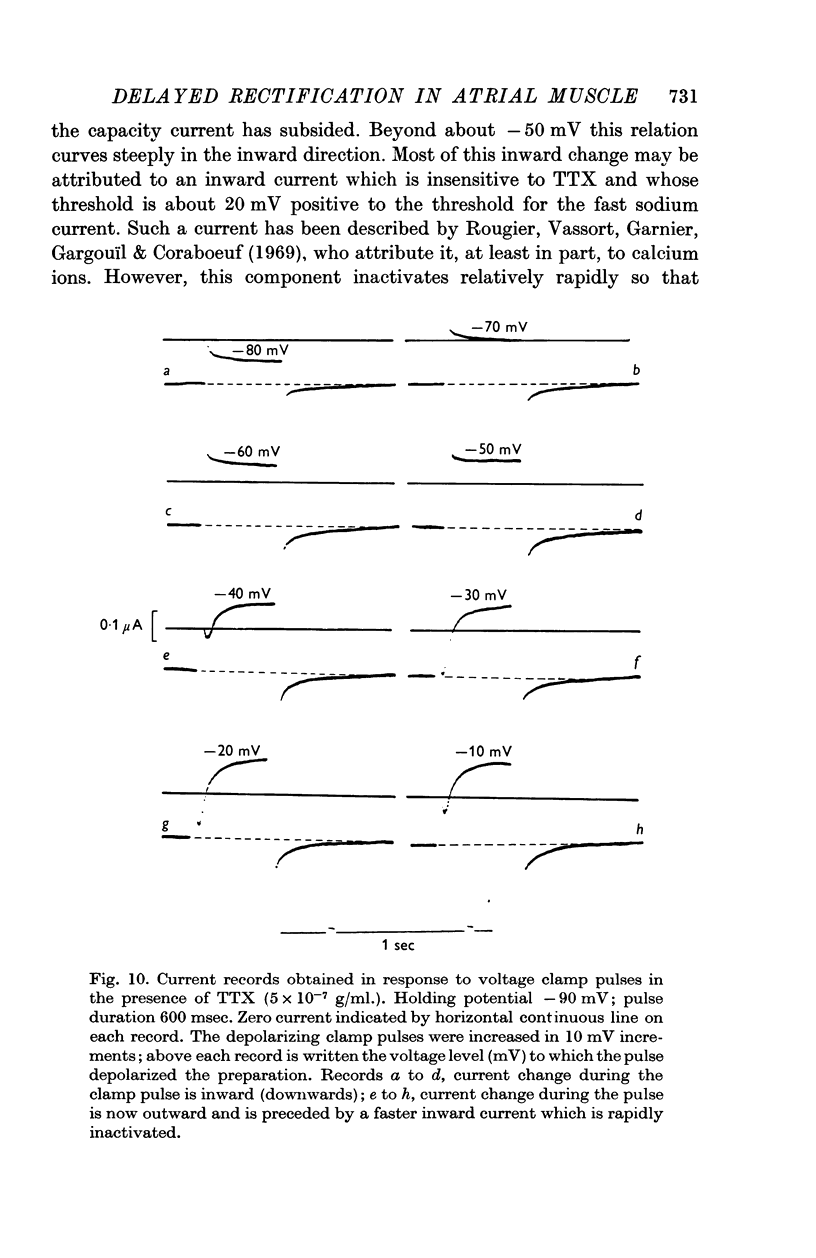
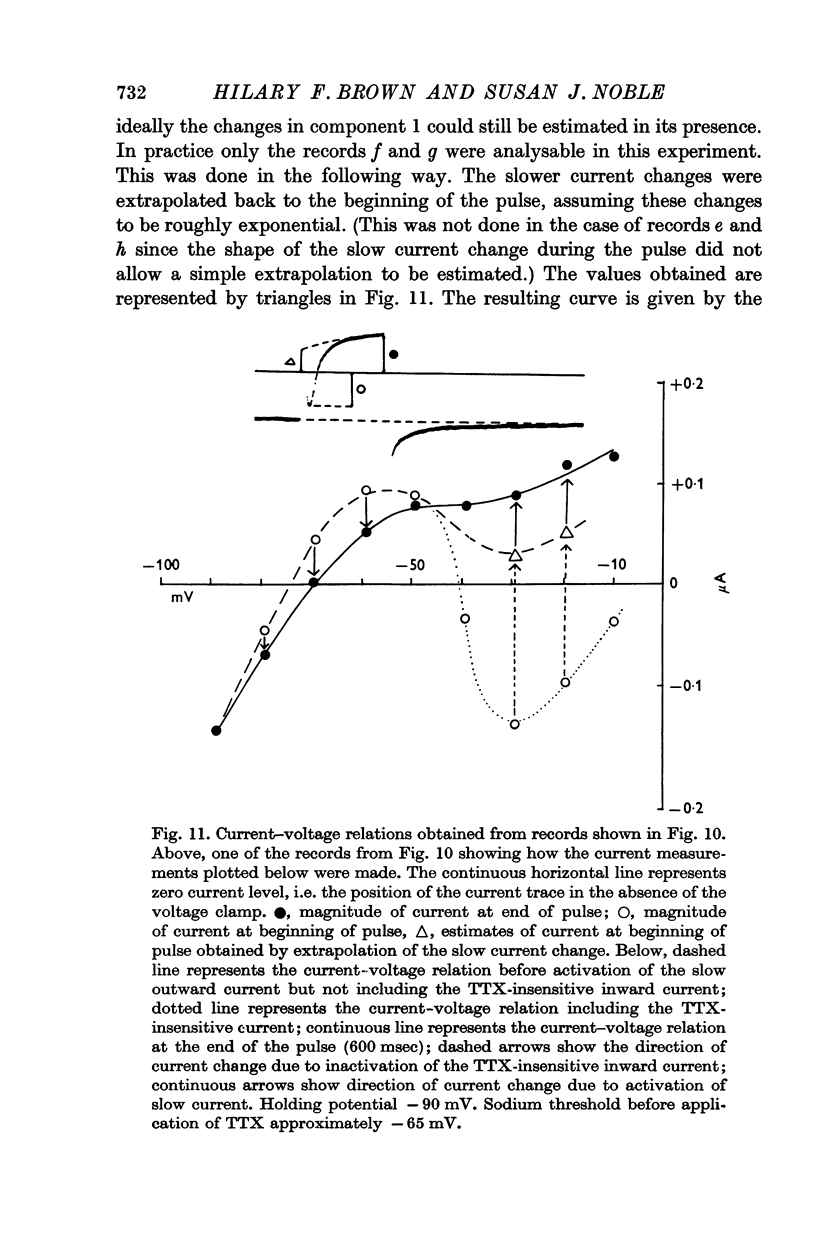
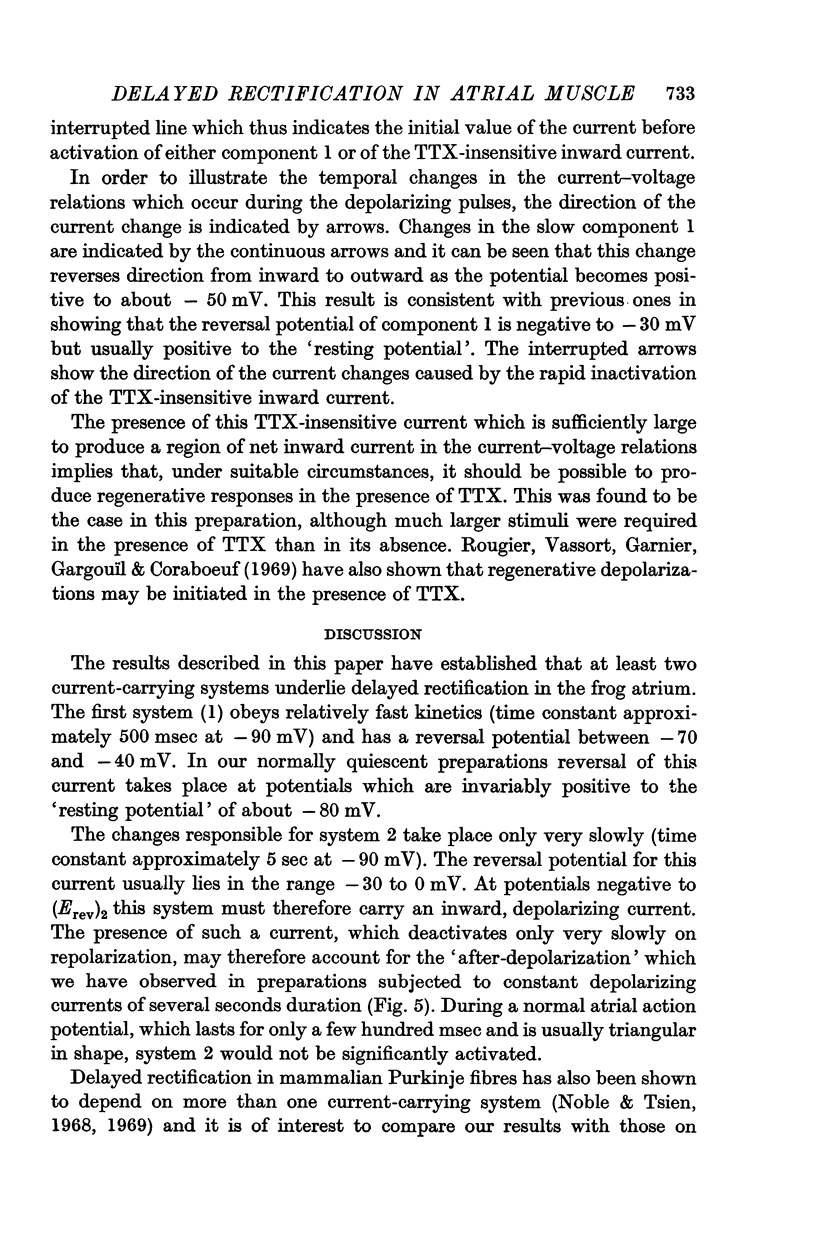
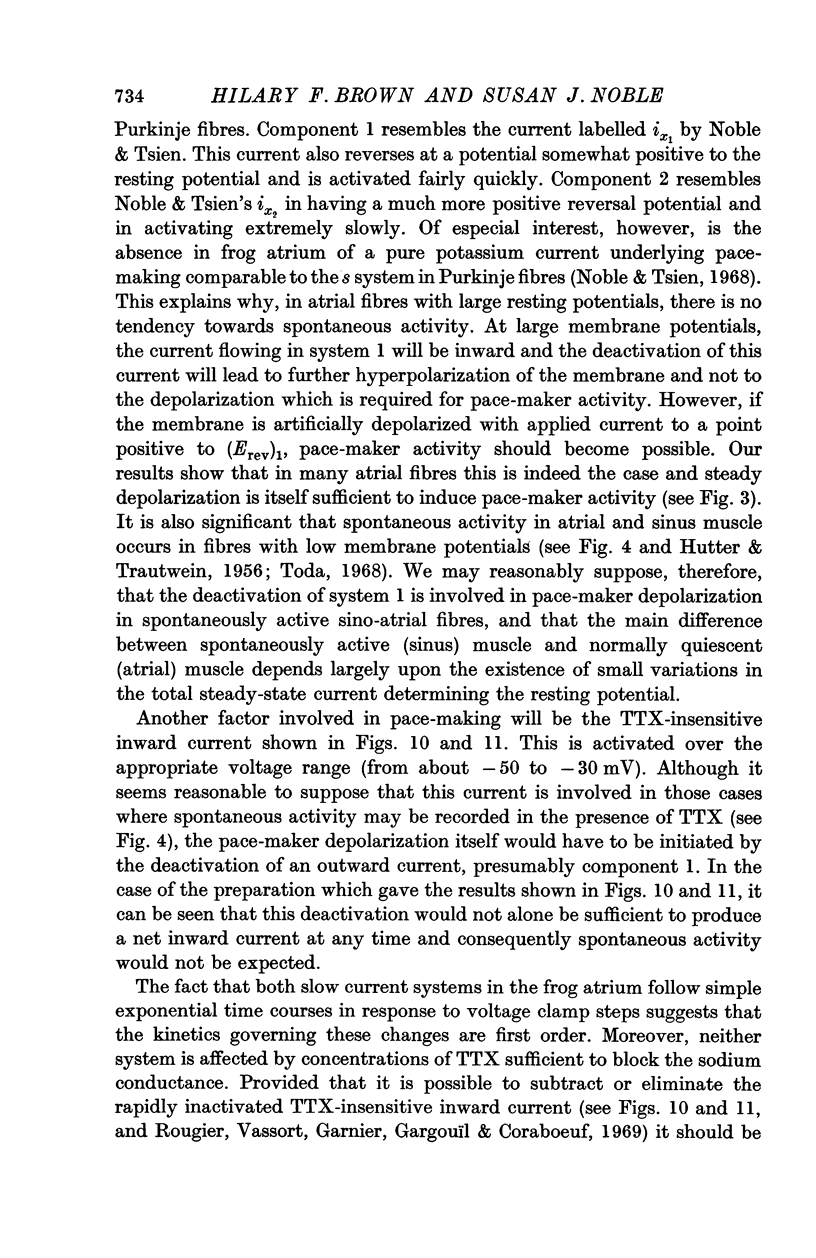
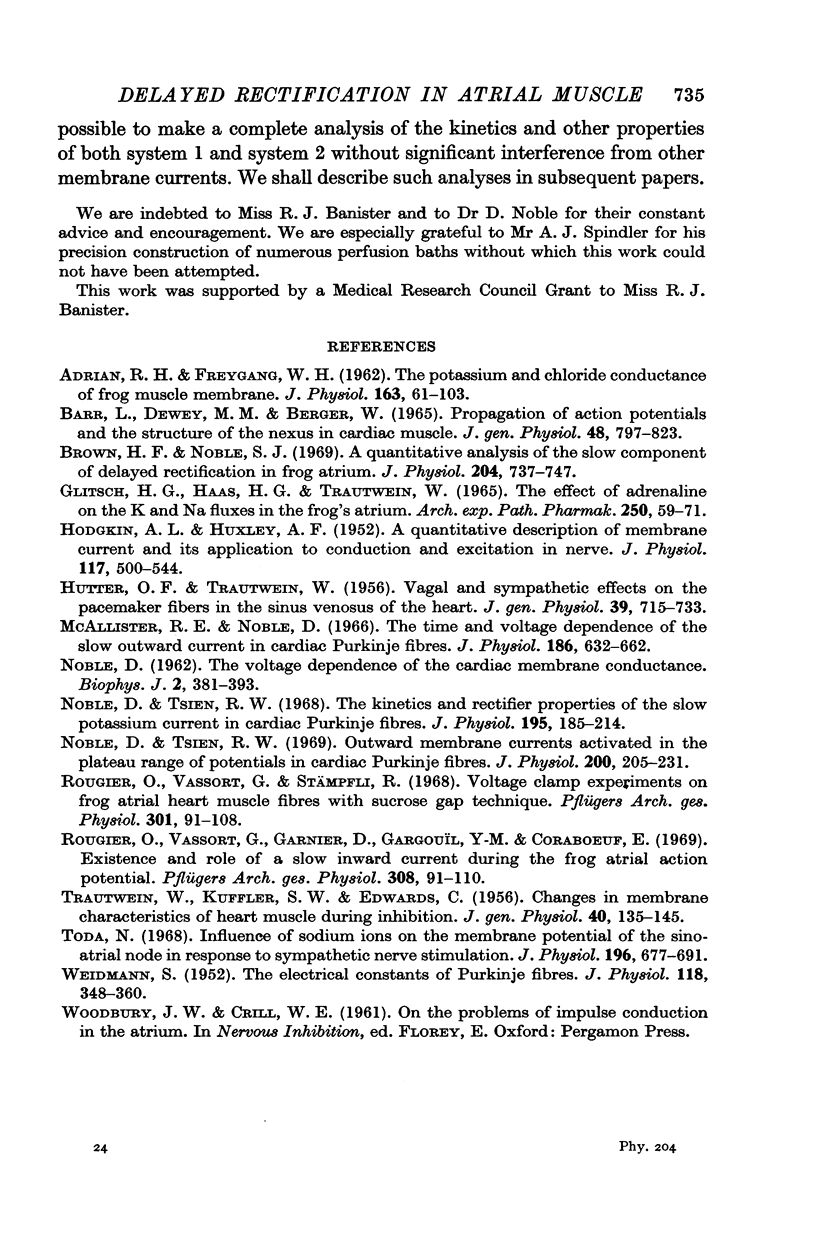
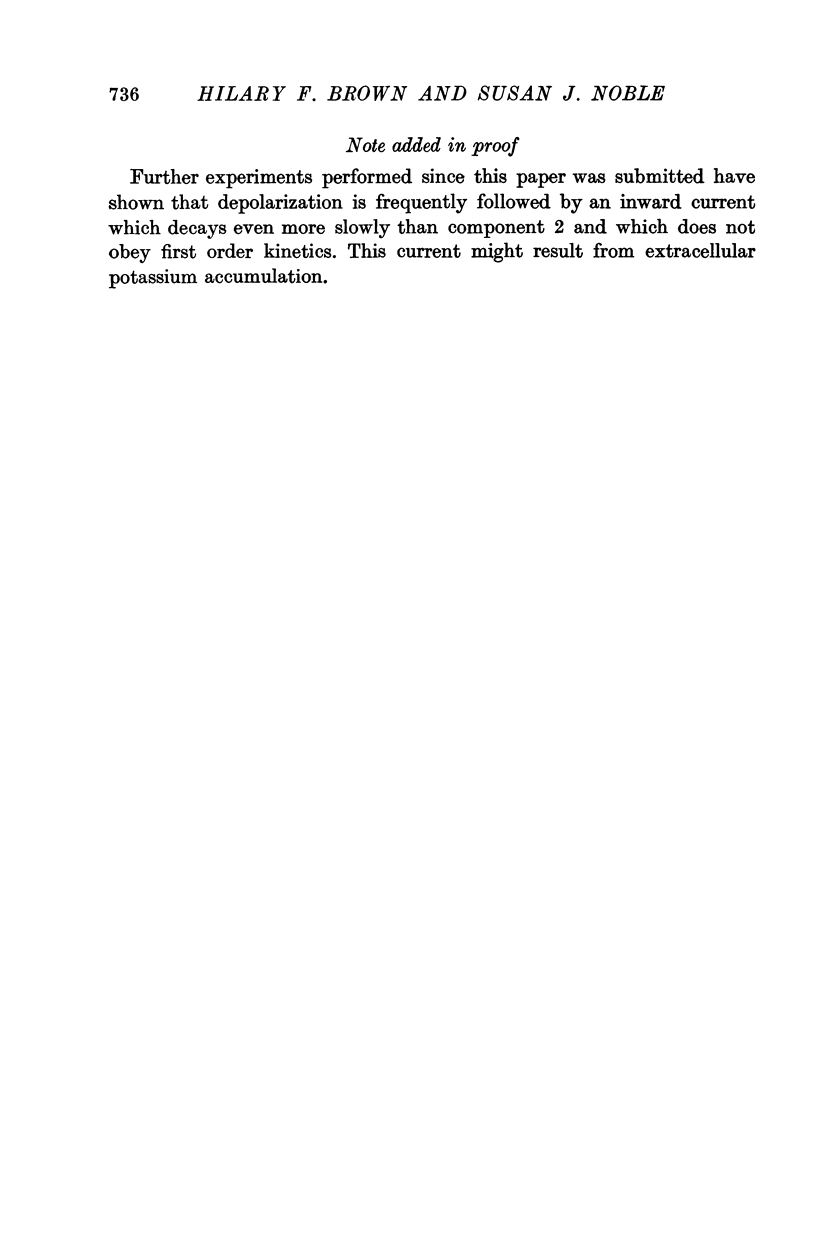
Selected References
These references are in PubMed. This may not be the complete list of references from this article.
- Adrian R. H., Freygang W. H. The potassium and chloride conductance of frog muscle membrane. J Physiol. 1962 Aug;163(1):61–103. doi: 10.1113/jphysiol.1962.sp006959. [DOI] [PMC free article] [PubMed] [Google Scholar]
- BARR L., DEWEY M. M., BERGER W. PROPAGATION OF ACTION POTENTIALS AND THE STRUCTURE OF THE NEXUS IN CARDIAC MUSCLE. J Gen Physiol. 1965 May;48:797–823. doi: 10.1085/jgp.48.5.797. [DOI] [PMC free article] [PubMed] [Google Scholar]
- Brown H. F., Noble S. J. A quantitative analysis of the slow component of delayed rectification in frog atrium. J Physiol. 1969 Oct;204(3):737–747. doi: 10.1113/jphysiol.1969.sp008941. [DOI] [PMC free article] [PubMed] [Google Scholar]
- EDWARDS C., KUFFLER S. W., TRAUTWEIN W. Changes in membrane characteristics of heart muscle during inhibition. J Gen Physiol. 1956 Sep 20;40(1):135–145. doi: 10.1085/jgp.40.1.135. [DOI] [PMC free article] [PubMed] [Google Scholar]
- GLITSCH H. G., HAAS H. G., TRAUTWEIN W. THE EFFECT OF ADRENALINE ON THE K AND NA FLUXES IN THE FROG'S ATRIUM. Naunyn Schmiedebergs Arch Exp Pathol Pharmakol. 1965 Feb 2;250:59–71. doi: 10.1007/BF00246883. [DOI] [PubMed] [Google Scholar]
- HODGKIN A. L., HUXLEY A. F. A quantitative description of membrane current and its application to conduction and excitation in nerve. J Physiol. 1952 Aug;117(4):500–544. doi: 10.1113/jphysiol.1952.sp004764. [DOI] [PMC free article] [PubMed] [Google Scholar]
- HUTTER O. F., TRAUTWEIN W. Vagal and sympathetic effects on the pacemaker fibers in the sinus venosus of the heart. J Gen Physiol. 1956 May 20;39(5):715–733. doi: 10.1085/jgp.39.5.715. [DOI] [PMC free article] [PubMed] [Google Scholar]
- McAllister R. E., Noble D. The time and voltage dependence of the slow outward current in cardiac Purkinje fibres. J Physiol. 1966 Oct;186(3):632–662. doi: 10.1113/jphysiol.1966.sp008060. [DOI] [PMC free article] [PubMed] [Google Scholar]
- NOBLE D. The voltage dependence of the cardiac membrane conductance. Biophys J. 1962 Sep;2:381–393. doi: 10.1016/s0006-3495(62)86862-3. [DOI] [PMC free article] [PubMed] [Google Scholar]
- Noble D., Tsien R. W. Outward membrane currents activated in the plateau range of potentials in cardiac Purkinje fibres. J Physiol. 1969 Jan;200(1):205–231. doi: 10.1113/jphysiol.1969.sp008689. [DOI] [PMC free article] [PubMed] [Google Scholar]
- Noble D., Tsien R. W. The kinetics and rectifier properties of the slow potassium current in cardiac Purkinje fibres. J Physiol. 1968 Mar;195(1):185–214. doi: 10.1113/jphysiol.1968.sp008454. [DOI] [PMC free article] [PubMed] [Google Scholar]
- Rougier O., Vassort G., Garnier D., Gargouil Y. M., Coraboeuf E. Existence and role of a slow inward current during the frog atrial action potential. Pflugers Arch. 1969;308(2):91–110. doi: 10.1007/BF00587018. [DOI] [PubMed] [Google Scholar]
- Rougier O., Vassort G., Stämpfli R. Voltage clamp experiments on frog atrial heart muscle fibres with the sucrose gap technique. Pflugers Arch Gesamte Physiol Menschen Tiere. 1968;301(2):91–108. doi: 10.1007/BF00362729. [DOI] [PubMed] [Google Scholar]
- Toda N. Influence of sodium ions on the membrane potential of the sino-atrial node in response to sympathetic nerve stimulation. J Physiol. 1968 Jun;196(3):677–691. doi: 10.1113/jphysiol.1968.sp008529. [DOI] [PMC free article] [PubMed] [Google Scholar]
- WEIDMANN S. The electrical constants of Purkinje fibres. J Physiol. 1952 Nov;118(3):348–360. doi: 10.1113/jphysiol.1952.sp004799. [DOI] [PMC free article] [PubMed] [Google Scholar]


